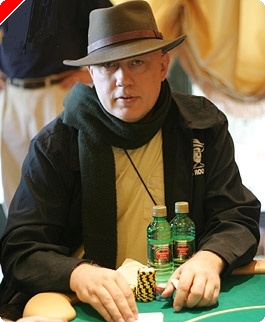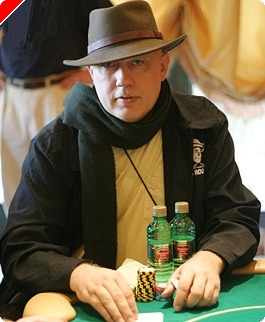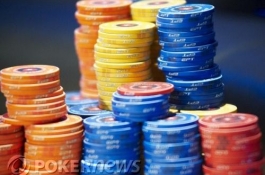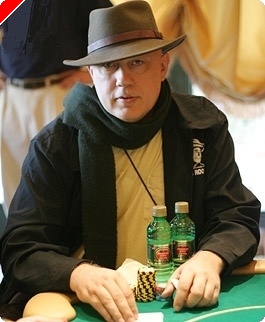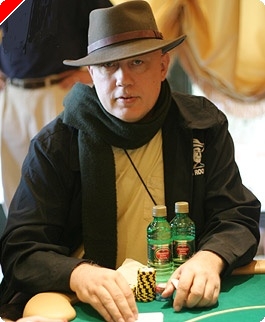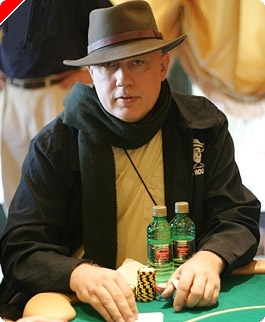Inside the Tour, #88: More on Bluffing

Bluffing. What does it mean? How important is it? Can one be successful without bluffing? Unnnh�� well, no. According to Dennis, you have no chance to be a winner in no-limit hold'em without bluffing. When people talk about "playing poker," what do they mean? You can tool up a monkey to start with certain hands in certain positions and then to play in a certain way after the flop, but that will not make the monkey a winner. It might keep the monkey's losses at a minimum, but that is all it can do.
At some point you need to be aware of a lot more things than your own hand. Some of the critical factors are your stack size, your opponent's stack size, the relationship between the two stacks, your opponent's personality, your opponent's perception of your personality, your actual personality, your position, your opponent's position, the perception of those relative positions that is taking place, your M, and then on to reading what your opponent's likely holding is, and how that might relate to your actual holding and to your represented holding. After this all becomes instinctual then everything is in place, and you can begin to "play poker".
Bluffing most often now happens in two distinct ways �� the BIG bluff, and the small bluff. A continuation bet where you have missed the flop completely is a small bluff. (For example, you hold Q?J? and have raised to three times the big blind before the flop and are called only by the big blind and it comes A?4?4?, the big blind checks and you bet 80% of the pot, which will win the pot most of the time when he does not hold an ace or a four.) Of course, sometimes he will check-raise with J?9? or 6?5? �� in other words, he is holding nothing but a handful of courage �� and make your bluff meaningless by re-bluffing�� or re-stealing if you prefer that choice of words.
Other small bluffs can be when you raise from the button with a vulnerable hand like 9?7? or when you call as first in from the little blind with a hand like 7?4?. If it comes something like A?K?K? after the big blind has checked before the flop, you bet out and usually take the hand right there. After all, the chance that you hold an ace or a king is greater than the big blind holding such a card as you voluntarily put some chips into the pot, whereas he got to the flop for free with a random holding. I call this the "soft steal." It makes sense but will not always win hands.
The big bluff happens more often as one more bullet, often an all-in shove for emphasis, after the river card, made in order to win a big pot. Let's give an example of that. We raise to three times the big blind (a 'standard' raise, in this case over a big blind of 400 with 25 antes, or 850 in the pot before the dealing begins) holding Q?J? off our stack of 22,400 and only the big blind calls off a stack of 18,900. The flop comes K?9?4? and he checks, we now bet 2,200 and he calls. The turn is the 6? and it goes check-check. The river is the 8? and running hearts have shown up, he checks again and now we move all in for 20,200 to win a pot of 7,250, and he is really hard pressed to make the call as his most likely holding is king-anything and he has to risk his tournament life and his last 15,900 to call. It looks like we had A?9? or some other straight draw (such as Q?J?) that became a flush �� assuming he is rational. This is a fairly easy bluff, but a personality check for sure. Much more complex bluffs after the river card exist, of course, and can win far bigger pots.
One famous player that makes such plays is Carlos Mortenson. I have seen him make big plays on every street when he thought it was appropriate, to the point that I can easily call him Mr. Fearless. In fact, at the final table of the World Championship event he raised before the flop and was re-raised by Mike Matusow with a weakish hand and then moved all in! He wasn't about to surrender being the table boss to Mike. Mike reluctantly laid his ace-rag down and Carlos showed Q-rag! Wow! We might see this kind of play from Scotty after a few beers, but from a completely sober player, although a fearless one? Rarely.
Phil Ivey has become quite famous in recent years and he makes plays where his big bluffs and his huge hands are played exactly the same way. In the 2006 Aussie Millions, I was working for Fox Sports and so could see all the hole cards on the televised table where Phil played. (I was, of course, in a separate room.) In one episode he flopped four kings versus Jerry Fitt. He bet the K-K-10 flop, got called, and then seemed to shut down out of fear. Both checked the turn. On the river Fitt made a full house and checked it, Phil thought for quite a while and then moved all in. Fitt squirmed for a bit and then threw his hand away. In a later episode, as the players neared the money, Ivey raised from the cut-off with Q-high and was called by Jamil Dia on the button, who held A-K, the flop brought nothing J?2?-2 and Phil fired the second bullet. He was called by Jamil again. The A? showed on the turn and Phil bet again, Jamil again took several minutes and called, the river brought the K?, making four diamonds on the board, and Ivey thought for a minute and then moved all-in with Q-high, no flush and no draw! Jamil thought for something like eight minutes and at last thought that Kenna James in the one seat was calling time on him and Jamil called. Whoops! Phil had bluffed the wrong guy; a very stubborn Jamil had called him down with four diamonds on board!
Fitt was distraught about having laid his full house down earlier to Phil's all-in. Sorry, Jerry, but Phil was following the approved pattern of betting his stone-cold bluffs exactly as he played his stone-cold nuts, even when this was incorrectly viewed by opponents.
So until next time play good�� and don't forget to be lucky!

